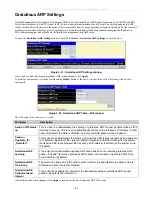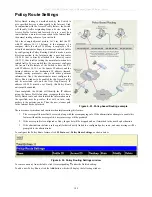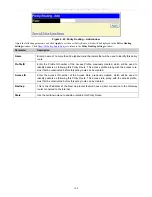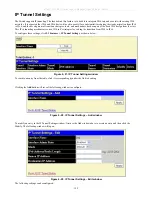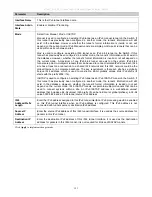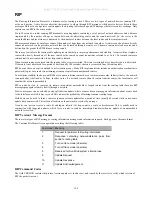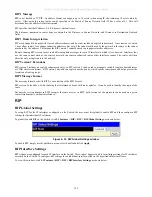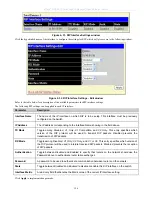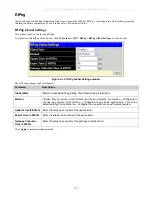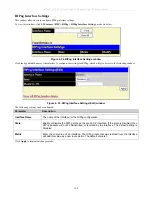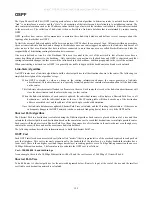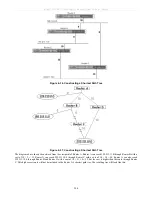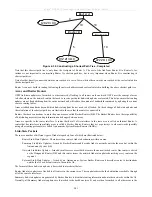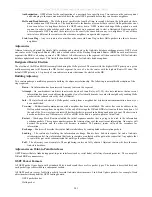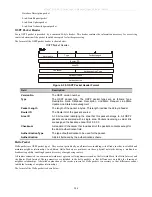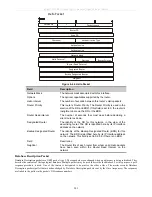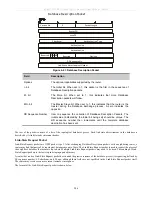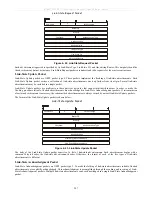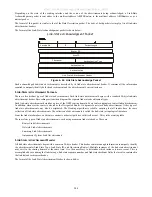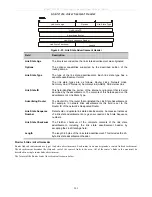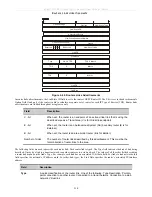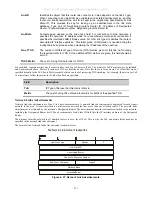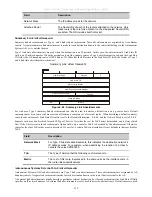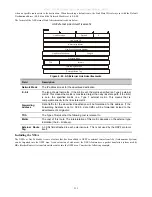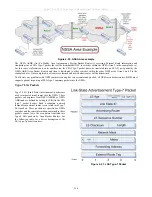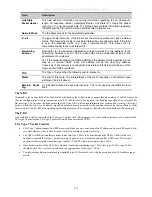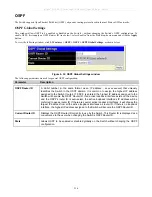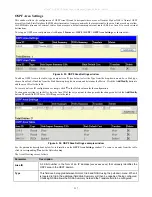
xStack
®
DGS-3600 Series Layer 3 Managed Gigabit Ethernet Switch
network. Border Routers also have the responsibility of distributing routing information from the Autonomous System Border
Router in order for routers in the network to get and maintain routes to other Autonomous Systems.
Network link-state updates are generated by a router elected as the Designated Router on a multi-access segment (with more than
one attached router). These updates describe all of the routers on the segment and their network connections.
External link-state updates carry routing information to networks outside the Autonomous System. The Autonomous System
Border Router is responsible for generating and distributing these updates.
OSPF Authentication
OSPF packets can be authenticated as coming from trusted routers by the use of predefined passwords. The default for routers is
to use no authentication.
There are two other authentication methods
−
simple password authentication (key) and Message Digest authentication (MD-5).
Message Digest Authentication (MD-5)
MD-5 authentication is a cryptographic method. A key and a key-ID are configured on each router. The router then uses an
algorithm to generate a mathematical “message digest” that is derived from the OSPF packet, the key and the key-ID. This
message digest (a number) is then appended to the packet. The key is not exchanged over the wire and a non-decreasing sequence
number is included to prevent replay attacks.
Simple Password Authentication
A password (or key) can be configured on a per-area basis. Routers in the same area that participate in the routing domain must be
configured with the same key. This method is possibly vulnerable to passive attacks where a link analyzer is used to obtain the
password.
Backbone and Area 0
OSPF limits the number of link-state updates required between routers by defining areas within which a given router operates.
When more than one area is configured, one area is designated as area 0
−
also called the backbone.
The backbone is at the center of all other areas
−
all areas of the network have a physical (or virtual) connection to the backbone
through a router. OSPF allows routing information to be distributed by forwarding it into area 0, from which the information can
be forwarded to all other areas (and all other routers) on the network.
In situations where an area is required, but is not possible to provide a physical connection to the backbone, a virtual link can be
configured.
Virtual Links
Virtual links accomplish two purposes:
Linking an area that does not have a physical connection to the backbone.
Patching the backbone in case there is a discontinuity in area 0.
Areas Not Physically Connected to Area 0
All areas of an OSPF network should have a physical connection to the backbone, but in some cases it is not possible to physically
connect a remote area to the backbone. In these cases, a virtual link is configured to connect the remote area to the backbone. A
virtual path is a logical path between two border routers that have a common area, with one border router connected to the
backbone.
Partitioning the Backbone
OSPF also allows virtual links to be configured to connect the parts of the backbone that are discontinuous. This is the equivalent
to linking different area 0s together using a logical path between each area 0. Virtual links can also be added for redundancy to
protect against a router failure. A virtual link is configured between two border routers that both have a connection to their
respective area 0s.
Neighbors
Routers that are connected to the same area or segment become neighbors in that area. Neighbors are elected via the Hello
protocol. IP multicast is used to send out Hello packets to other routers on the segment. Routers become neighbors when they see
themselves listed in a Hello packet sent by another router on the same segment. In this way, two-way communication is
guaranteed to be possible between any two neighbor routers.
Any two routers must meet the following conditions before the become neighbors:
Area ID
−
Two routers having a common segment
−
their interfaces have to belong to the same area on that segment. Of
course, the interfaces should belong to the same subnet and have the same subnet mask.
202

